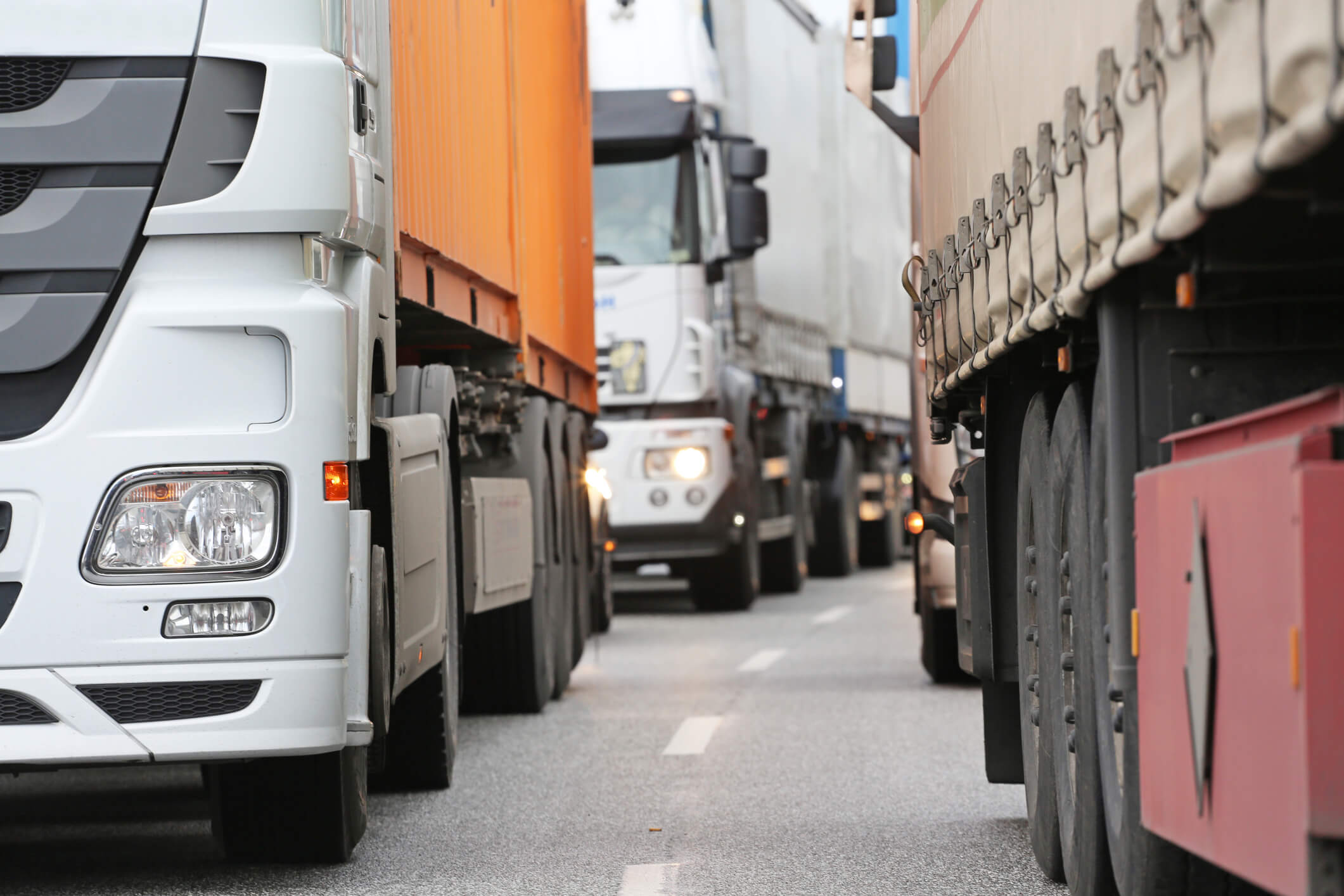The freight challenge
The exponential increase in transport volumes over the last 50 years has been accompanied by an increase in air pollution, traffic jams, accidents, noise pollution, and significantly contributing to climate change. In Europe alone, this is estimated to cost the European Union an estimated €1,000bn/year!
Transport emissions account for 24% of all global emissions of greenhouse gases (10% of which is from freight alone), making it the second-highest emitting sector after energy production.
In this context, reducing emissions from freight is a somewhat unprecedented challenge; to reduce emissions by 30% by 2030 (meeting the objectives of the Paris agreement) despite the International Trade Forum predicting trade to triple by 2050.
So how can we achieve this goal?
This article suggests actions companies can take to reduce their carbon emissions, focusing on transport, setting aside industrial relocation challenges.
1 – Start by reducing your transport costs
The first step is to optimize capacity, which allows you to reduce costs while favoring modes of transport that generate fewer emissions.
Maximize the fill rates of freight
The options for increasing the filling of freight are numerous and these are just some of the ways you can increase cargo capacity; optimize the weight/volume of packaging, use palletization plans, pallet risers, and/or favor the use of homogenous pallet transportation rather than using heterogeneous pallets which take up more space.
Re-design your network to reduce freight requirements
What’s good for the environment is nicely aligned to what is good for the bottom line. Reducing overall freight requirements through network redesign will naturally do both. With the exponential growth of e-commerce demand and rapid fulfillment options, leveraging all stocking points, particularly those closest to your customers, is essential to low-cost fulfillment while fulfilling the objective of reducing the overall freight task.
Optimization of resources:
For transport by road, this can be done by favoring large volume rigid-axle vehicles and/or articulated vehicles or through the use of a lightweight aluminum trailer which gives the option of increasing the payload (as opposed to a heavier trailer).
In a shared services model, developing synergies with partners (or competitors) can lead to a 30% decrease in the number of vehicles in circulation. For example, companies located in the same warehouse with the same (or similar) delivery objectives can share freight/delivery.
Optimize useful distances
In France, nearly 25% of trucks on the road are empty. This is a valuable statistic and could be improved drastically in all countries. Below are two options of how this could be achieved;
- Logistically: such as utilizing “backhauling” (hauling cargo from point B, back to point A), using couple flows, and minimizing the distances of relocating of trucks systematically.
- Digitally: support tools can aid decision-making under specific constraints to significantly optimize the distances traveled. For example, setting up a ‘route optimizer’ results in gains of between 5-10% compared to opting for the ‘modal shift’ (switching modes of transport). However, the ‘modal shift’ itself can act as a powerful driver in reducing the carbon footprint of companies. For example, intercontinental transport flows show that air passage in the maritime sector cut emissions by 50% and costs by 20%.
2. Make responsible choices
Economic drivers can also contribute to a significant reduction in the CO2 footprint but remain insufficient in achieving the objectives set out in the Paris agreement. To be successful, they must be supplemented by implementing a responsible transport policy.
A policy could integrate CSR accountability criteria during contract tenders for fleet renewal or the purchase of transport services to reduce emissions per kilometer tonne.
These criteria could be accomplished through one or more of the following suggestions:
- Clean vehicle fleets: use a vehicle fleet with a minimum emission standard rating. This can be done by using vehicles running on biogas or the use of electric vehicles. Today, the leading manufacturers of freight vehicles are beginning to develop such sustainable options, which are likely to increase within the vehicle manufacturing industry.
- Eco-Driver Training: driving economically can achieve reductions in fuel consumption of around 5% and telematic control systems offer ways of monitoring the way the vehicle is driven.
- Commitments: choose a contractor committed to reducing greenhouse gas emissions as part of the Freight 21 (Fret21) initiative and/or commit to reducing CO2 within your company’s distribution policy.
The transport industry’s carbon footprint is vastly disproportionate compared to that of the warehousing industry by a ratio of at least 95:1. In contrast, the financial costs of transport and storage are fairly similar. Logistics managers must analyze costs, stock levels, and CO2 impacts of various transportation and warehousing options because while they may appear to be economically similar, there is the potential that one may be significantly better in regards to CO2 emission reductions. For example, when reducing financial costs, a company may reduce the number of warehouses. However, this may increase transportation distances, thus increasing CO2 emissions.
The more we reduce the mass production of luxury items (massification), the more times deliveries are made on time; the more significant the impact on emissions.
Reducing the frequency of deliveries (by storing more) or increasing the delivery times for the end customer are opportunities for emissions reductions that can be studied further. For example, many retailers are starting to raise the awareness to their customers of how their delivery methods are environmentally friendly, albeit slower.
3. Join a forward-looking vision
Responsible transport policy actions implemented by companies can achieve significant reductions, but these policies must be supported by politicians and the public on two main axes;
- Using financial incentives/stimuli to develop transport sectors with low CO2 footprints such as river or rail networks while ensuring the same quality of service that air or road transport currently provides. Some countries have already succeeded at this, such as Switzerland, where 42% of trade takes place via rail networks.
- Supporting technological innovations by upgrading necessary infrastructure. This goes beyond the electrification of vehicles as other technological innovations are also being developed. For example, sails on container ships within the maritime sector and the development of hydrogen as a fuel within the air and road sectors. In countries such as France, where diesel fuel equates to 97% of the fuel used in freight, there is still a long way to go before these innovations are realized.
4. Businesses: it’s time to set goals, measure, and act!
At a company level, the reduction of transport emissions in response to the climate challenge sees the need for a combination of transport training, making responsible choices, and having a prospective vision. Engaging in these dynamic factors and successfully implementing them will be based on five main factors;
- The adoption of various reduction targets across business decision-making processes;
- Being able to measure the business’s carbon footprint, identify the main causes of emissions, and identify ways to make improvements in emission reductions (stage 1). This is followed by steering the business to action the necessary improvements;
- Being analytical; the drivers of CO2 emissions are numerous and often complex, and it is, therefore, important to analyze them in a way that numerically conceptualizes the issues and their accessibility (economic impacts, services, stock levels, market maturity, etc.);
- Collaborate with stakeholders and suppliers when trying to reduce emissions, and communicate with your customers, all of whom are becoming more and more sensitive to the environmental performance of businesses;
- Enthusiasm! This approach to reducing CO2 emissions gives a unique opportunity to mobilize and unite employees by establishing a sense that their work is important.






